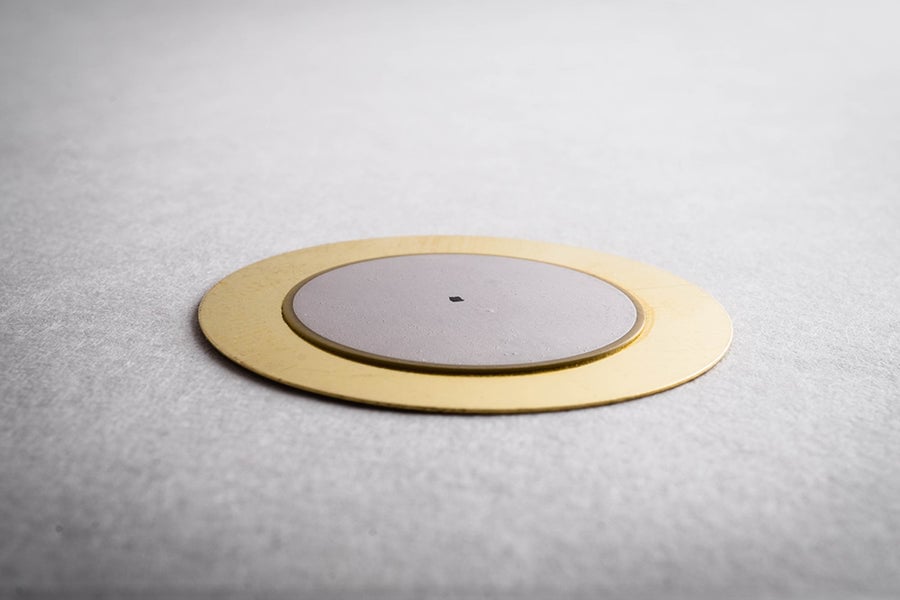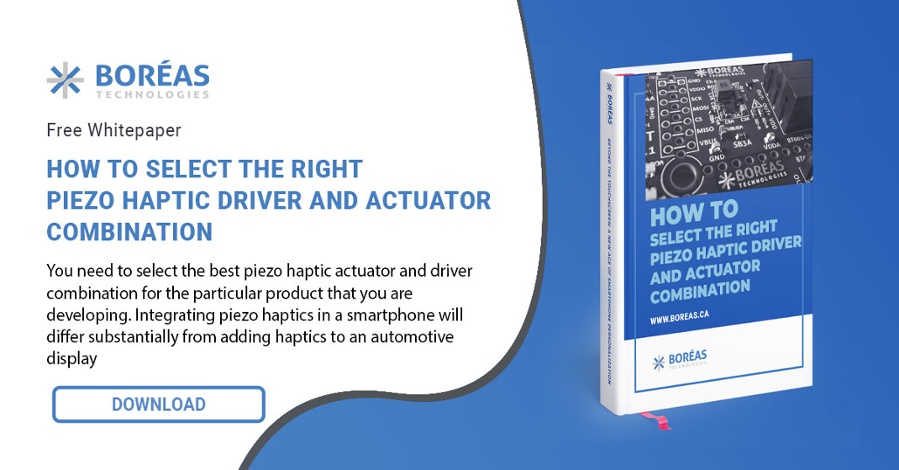
First discovered in 1880 by Jacques and Pierre Curie, the piezoelectric effect has proven essential in many applications. From piezo transducers used in electronics to piezoelectric sensors found in medical imaging, applying a mechanical strain to generate an electrical field has found its way into all sorts of industries — and its inverse effect has proven just as powerful.
In this article, we'll take a look at what causes the piezoelectric effect, its different forms, the types of piezo crystals available, and how this scientific phenomenon can be applied to your industry. If you've ever wondered, "What is the piezoelectric effect?," read on, and you'll find out!
How Is the Piezoelectric Effect Produced?
As puzzling as the piezoelectric effect may appear at first, the physics behind it is relatively straightforward. We'll spare you the equations, but to create the piezoelectric effect, crystals are compressed or strained, and an electrical charge is produced. Here's a breakdown of each step of the process.
Start With a Piezoelectric Crystal
The first materials displaying piezoelectric properties were naturally occurring semi-crystalline polymers, primarily quartz. These all have a crystal lattice structure that yields an electrical charge imbalance on its surfaces when a mechanical stress is applied. Some of the most common naturally occurring piezoelectric materials are:
- Quartz
- Topaz
- Rochelle salt
- Tourmaline
Researchers later found that a ceramic material possessing a similar lattice structure could also produce an electric charge when subjected to mechanical stress, so they went on to develop several synthetic piezoelectric ceramics. Some common synthetic piezoelectric materials include:
- Lead zirconate titanate, or PZT
- Barium titanate
- Niobium titanate
- Bismuth ferrite
- And many more
Many synthetic piezoelectric ceramics possess superior properties to their naturally occurring counterparts, and they can be more cost-effective to use as well.
Apply Mechanical Stress on Piezoelectric Element
Once a piezoelectric material is selected, it is sandwiched between two metal plates that will compress it to generate a charge imbalance on the surface of the crystal. The plates also collect the charges, creating a positively charged electrode on one side and a negatively charged electrode on the other. This makes a piezoelectric device similar in design to a battery in that it contains a positive and negative electrode, with a charge transport medium (a dielectric in the case of a battery and a crystal in the case of piezoelectrics) in between.
Convert Mechanical Energy Into Electrical Energy
The piezoelectric effect serves to convert mechanical energy into electrical energy and vice versa, and compressing or straining the piezoelectric material does just that. When the metal plates apply pressure to the piezoelectric material, they begin accumulating enough charge to create an electric potential, which is then used to send a voltage throughout an attached circuit. This is how mechanical energy is converted into electrical using the piezoelectric effect.
Direct Piezoelectric Effect vs. Inverse Piezoelectric Effect

The piezoelectric effect can create electrical energy from mechanical force, but it's able to do more than that. There are actually two versions of this phenomenon: the direct piezoelectric effect, and the inverse piezoelectric effect. Here's the difference between the two:
- The direct piezoelectric effect relies on a semi-crystalline polymer's ability to generate an electrical charge when a mechanical force is applied to it.
- Also known as the converse piezoelectric effect, the inverse piezoelectric effect applies an electrical field to a piezoelectric material, resulting in elongation or compression across its surface.
As the name implies, the two are simply conversing with each other. In the former, external physical deformation results in electricity, while in the latter, external electric field results in physical deformation — and both have unique applications.
Real-Life Applications of Piezoelectricity
If the piezoelectric effect sounds like merely an abstract scientific concept, it isn't. The piezoelectric effect is the underlying principle behind many devices that we use every day. Spanning a wide variety of industries, some of the most common piezoelectric applications are:
- Regardless of their size, many types of scales employ load cells to give an accurate measurement of an object's weight. These load cells generate an electric current proportional to their physical deformation, which corresponds to the weight applied to them.
- Weight isn't all that piezoelectric materials can measure; they can also detect vibrations, sound waves, and displacement. This makes them useful sensors in many robotics applications, where they can also be used to build high-voltage micropumps and haptic drivers.
- The most common use of piezoelectric materials may be found in your pocket or your hand: your mobile phone. The sensors that detect pressure applied on your smartphone's screen are a classic example of piezoelectric materials. They are also part of haptic design — the science of how touch impacts user experience.
- When the inverse piezoelectric effect is applied, an electric field can create a physical deformation like compression or strain. Oscillate the current fast enough, and the result is a speaker that outputs sound waves at the frequency of your choice.
- Piezoelectrics are commonplace in the healthcare industry and can be found in sensors, medical imaging technologies, and even electronic wearables. Piezoelectric materials can help doctors make better diagnoses and help patients live healthier lives.
Another application is the use of piezoelectrics in energy harvesting, as engineers attempt to design systems that capitalize on the latent energy in a space. Examples may include floor tiles that create a small electric current that powers an IoT (Internet of Things) sensor each time it's compressed, or even segments of highways that power traffic lights each time a vehicle drives over them.
Develop Exceptional Electronic Devices With a Piezo Driver
Whether your application consists of designing a direct piezo actuator for adjusting a telescope mirror or capturing unused energy to make low-power devices run more efficiently, the piezoelectric effect makes converting deformation into power possible. One way to harness the power of piezoelectrics is to use a piezo driver, which employs a piezo device polymer to deliver the necessary high-voltage current to your application at 10X lower power consumption.
Boréas Technologies has extensive experience in leveraging piezoelectric technology to create low-power haptic drivers that are ideally suited to electronic, automotive, and IoT applications, and many others as well. Contact us today, and let us power your next design.


Leave a comment